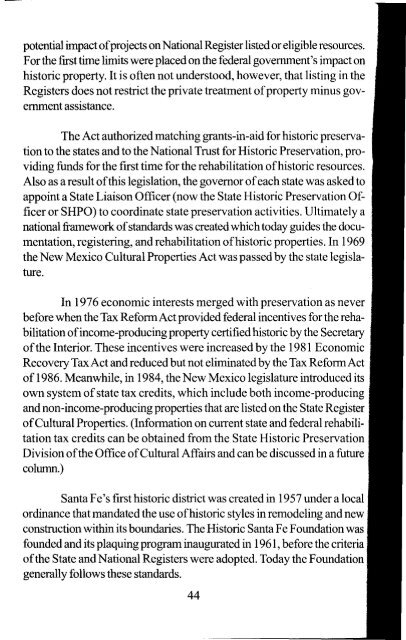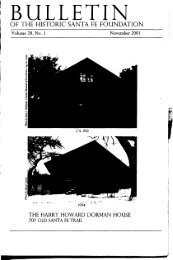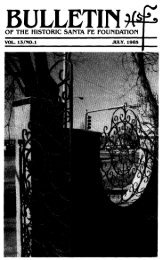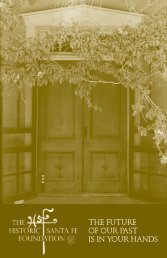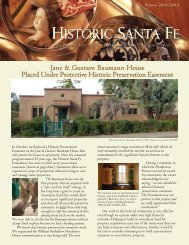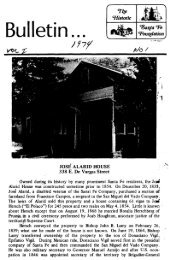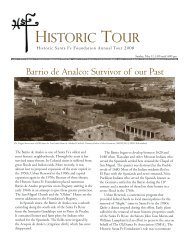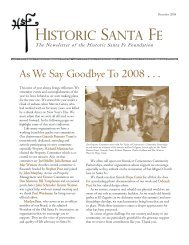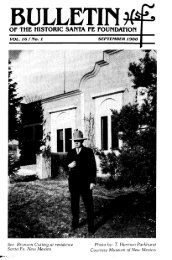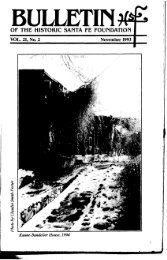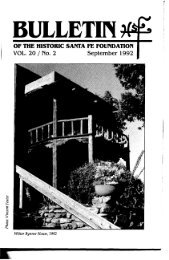Roque Tudesqui House - Historic Santa Fe Foundation
Roque Tudesqui House - Historic Santa Fe Foundation
Roque Tudesqui House - Historic Santa Fe Foundation
Create successful ePaper yourself
Turn your PDF publications into a flip-book with our unique Google optimized e-Paper software.
potential impact of projects on National Register listed or eligible resources.<br />
For the fIrst time limits were placed on the federal government's impact on<br />
historic property. It is often not understood, however, that listing in the<br />
Registers does not restrict the private treatment of property minus government<br />
assistance.<br />
The Act authorized matching grants-in-aid for historic preservation<br />
to the states and to the National Trust for <strong>Historic</strong> Preservation, providing<br />
funds for the first time for the rehabilitation of historic resources.<br />
Also as a result of this legislation, the governor of each state was asked to<br />
appoint a State Liaison Officer (now the State <strong>Historic</strong> Preservation Officer<br />
or SHPO) to coordinate state preservation activities. Ultimately a<br />
national framework of standards was created which today guides the documentation,<br />
registering, and rehabilitation of historic properties. In 1969<br />
the New Mexico Cultural Properties Act was passed by the state legislature.<br />
In 1976 economic interests merged with preservation as never<br />
before when the Tax Reform Act provided federal incentives for the rehabilitation<br />
of income-producing property certified historic by the Secretary<br />
of the Interior. These incentives were increased by the 1981 Economic<br />
Recovery Tax Act and reduced but not eliminated by the Tax Reform Act<br />
of 1986. Meanwhile, in 1984, the New Mexico legislature introduced its<br />
own system of state tax credits, which include both income-producing<br />
and non-income-producing properties that are listed on the State Register<br />
of Cultural Properties. (Information on current state and federal rehabilitation<br />
tax credits can be obtained from the State <strong>Historic</strong> Preservation<br />
Division ofthe Office of Cultural Affairs and can be discussed in a future<br />
column.)<br />
<strong>Santa</strong> <strong>Fe</strong>'s first historic district was created in 1957 under a local<br />
ordinance that mandated the use of historic styles in remodeling and new<br />
construction within its boundaries. The <strong>Historic</strong> <strong>Santa</strong> <strong>Fe</strong> <strong>Foundation</strong> was<br />
founded and its plaquing program inaugurated in 1961, before the criteria<br />
ofthe State and National Registers were adopted. Today the <strong>Foundation</strong><br />
generally follows these standards.<br />
44


